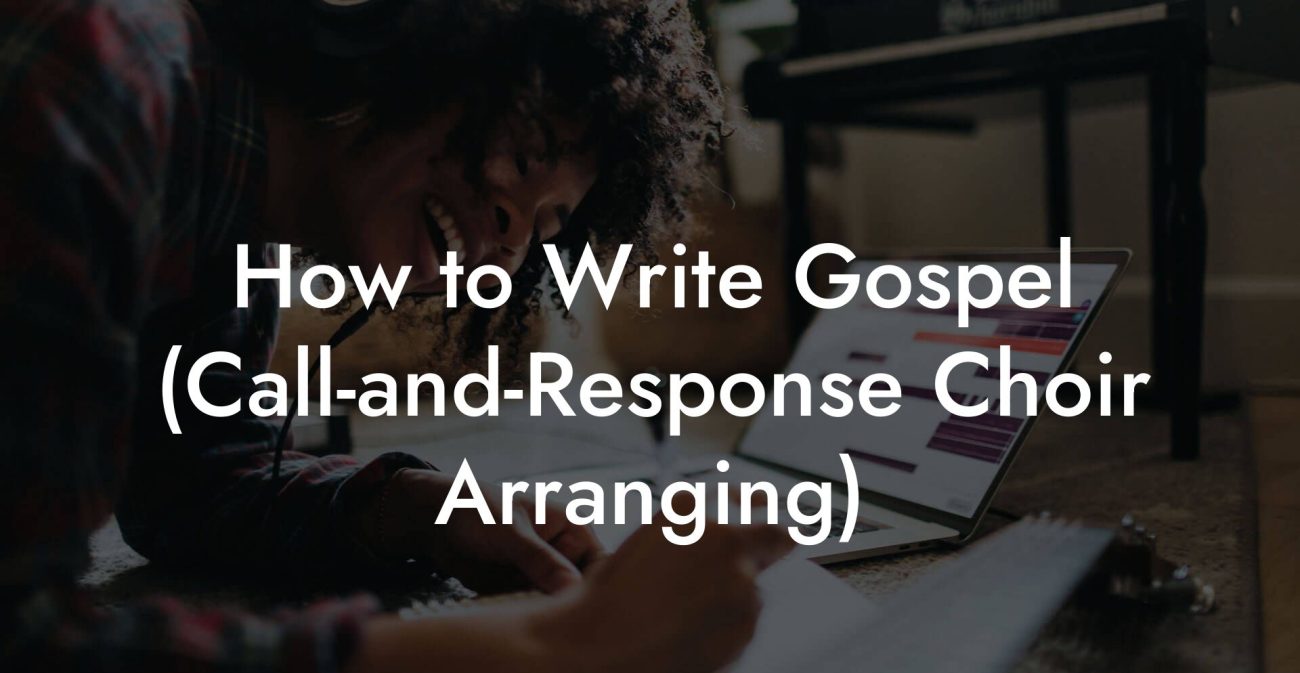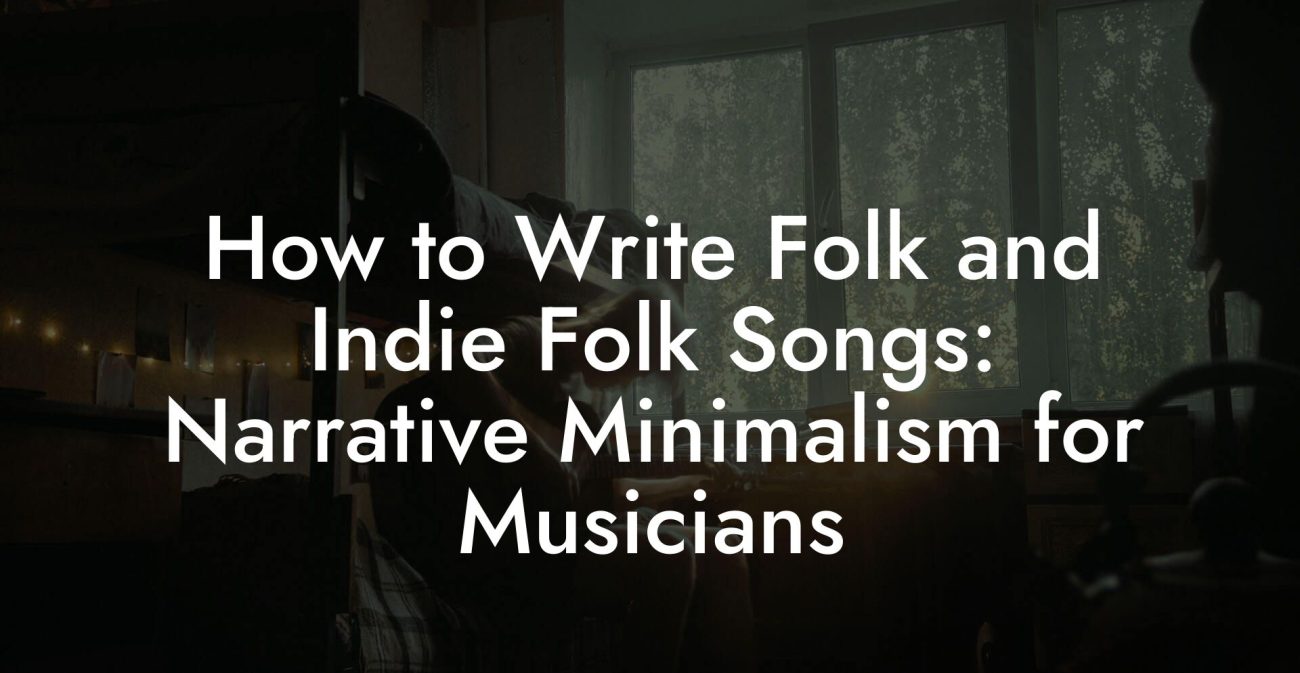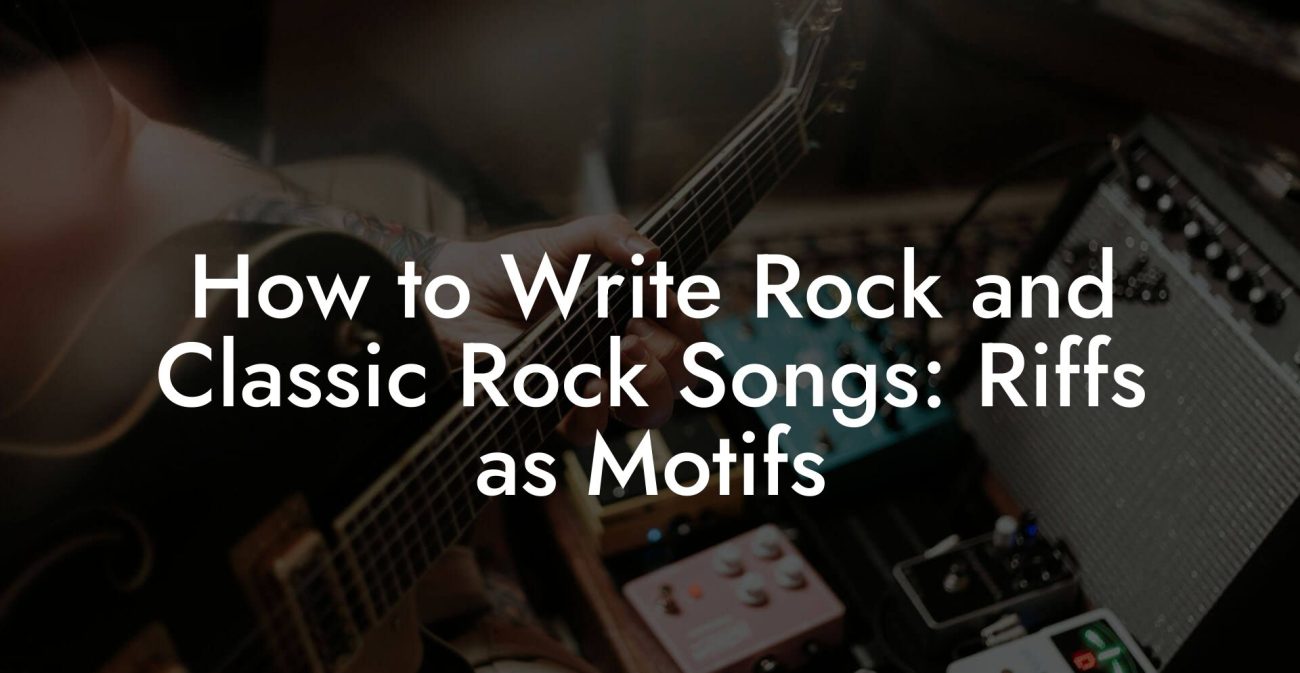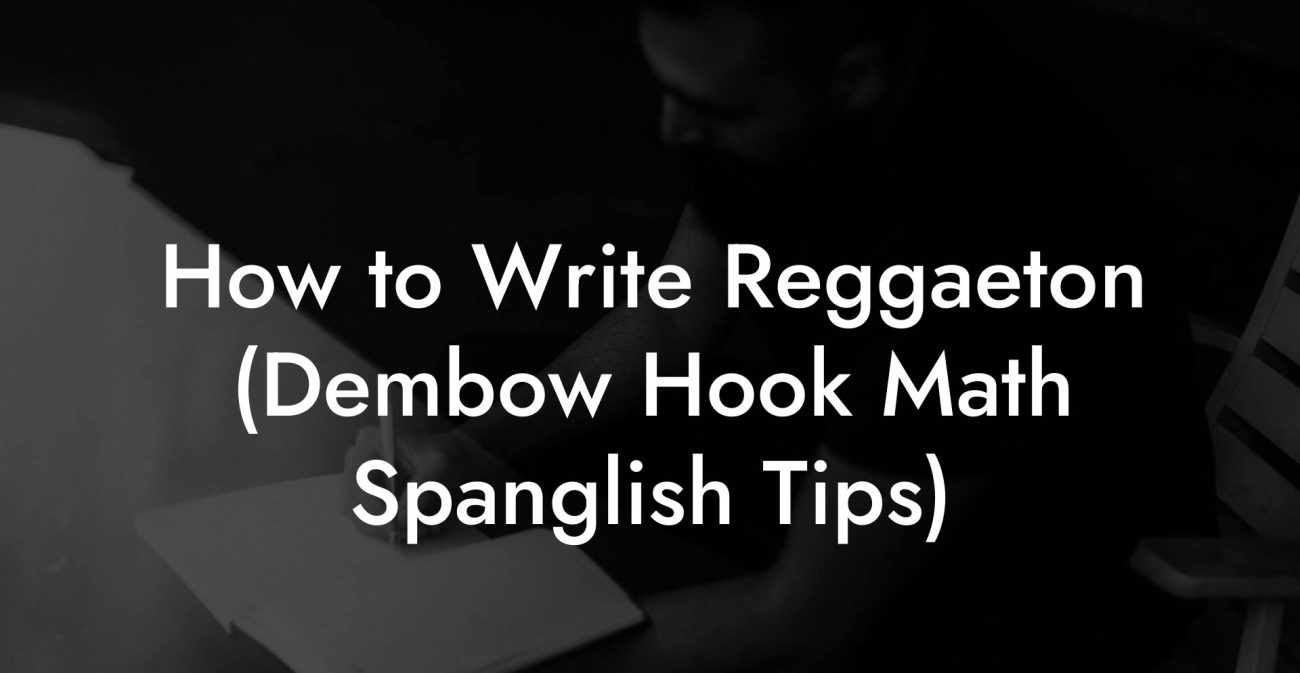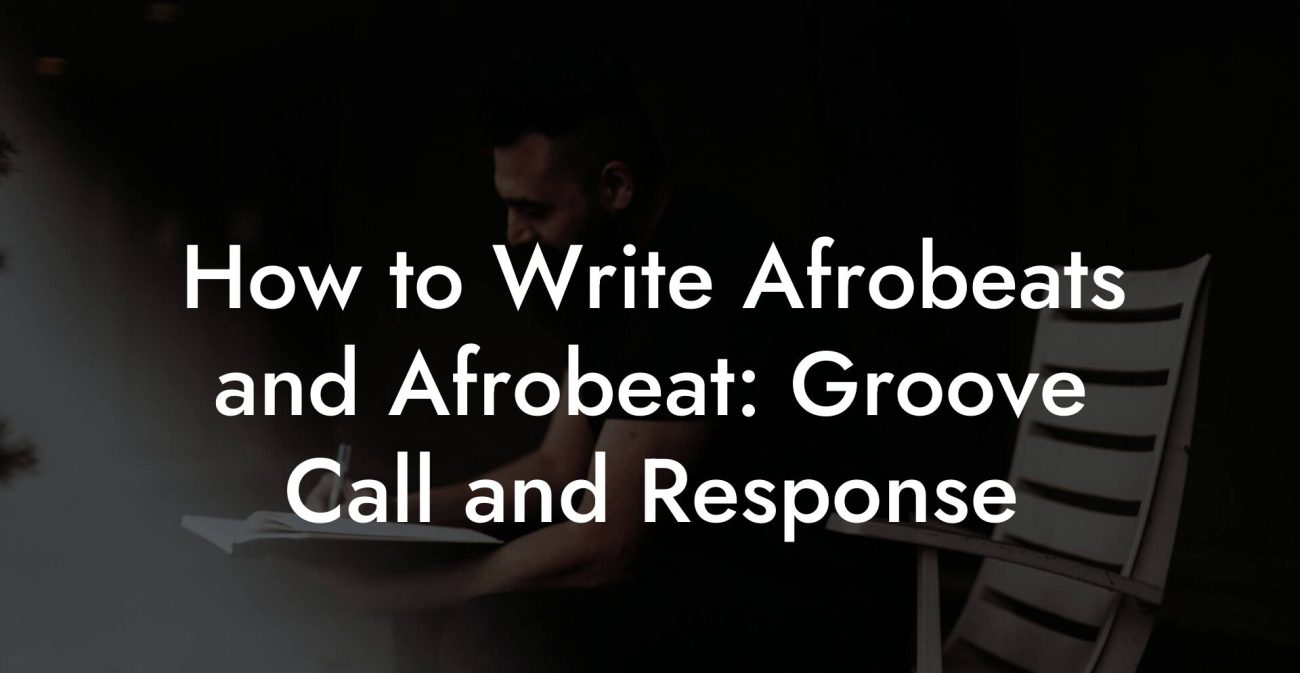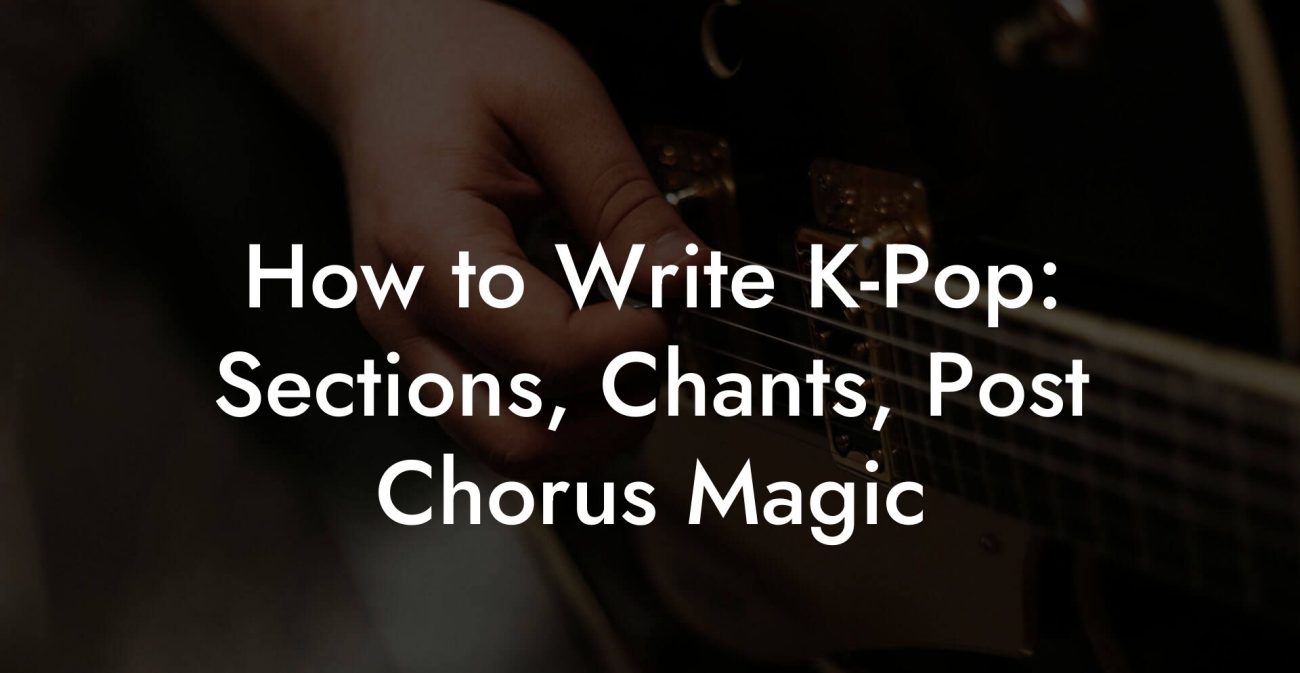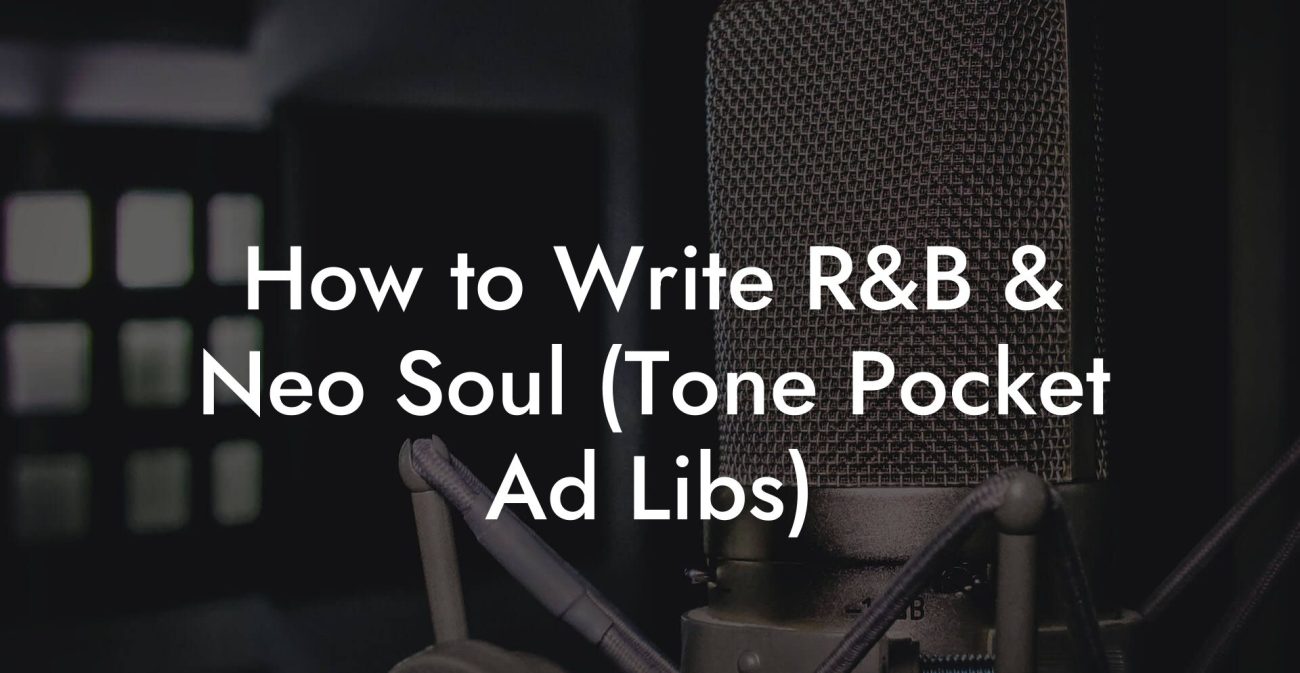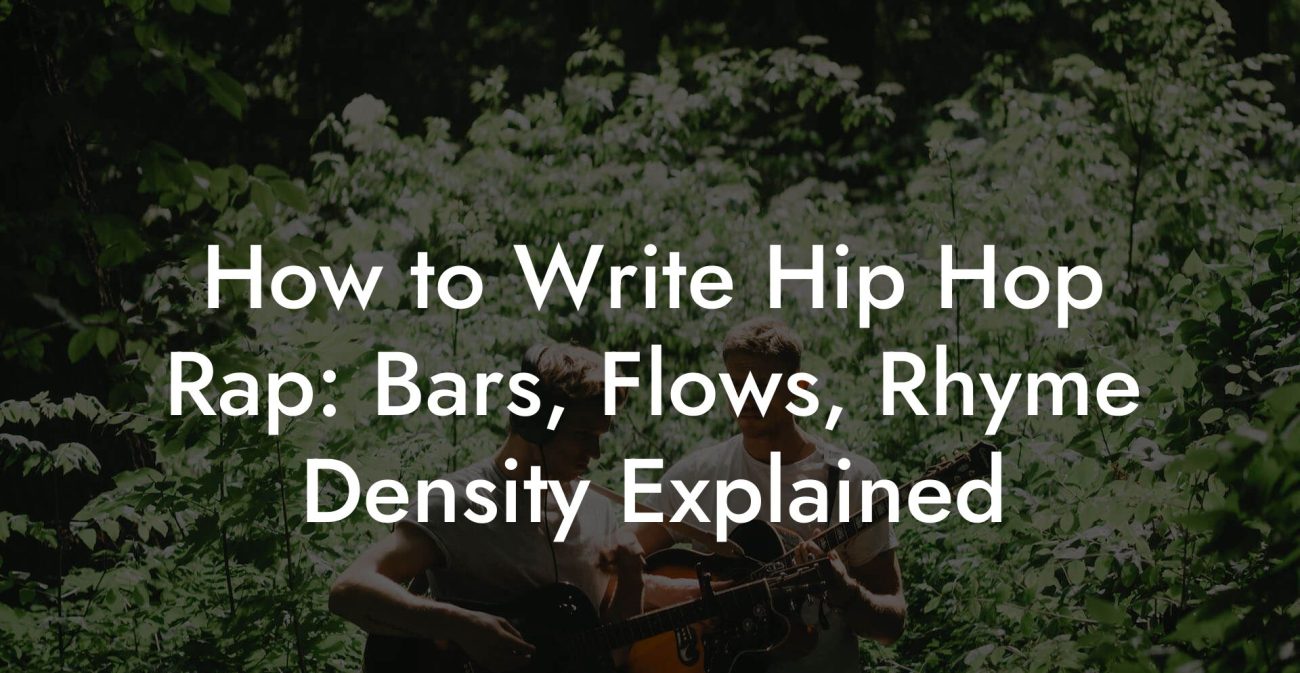Songwriting Advice
How to Write Bluegrass (Story Speed Runs Harmony Stacks)
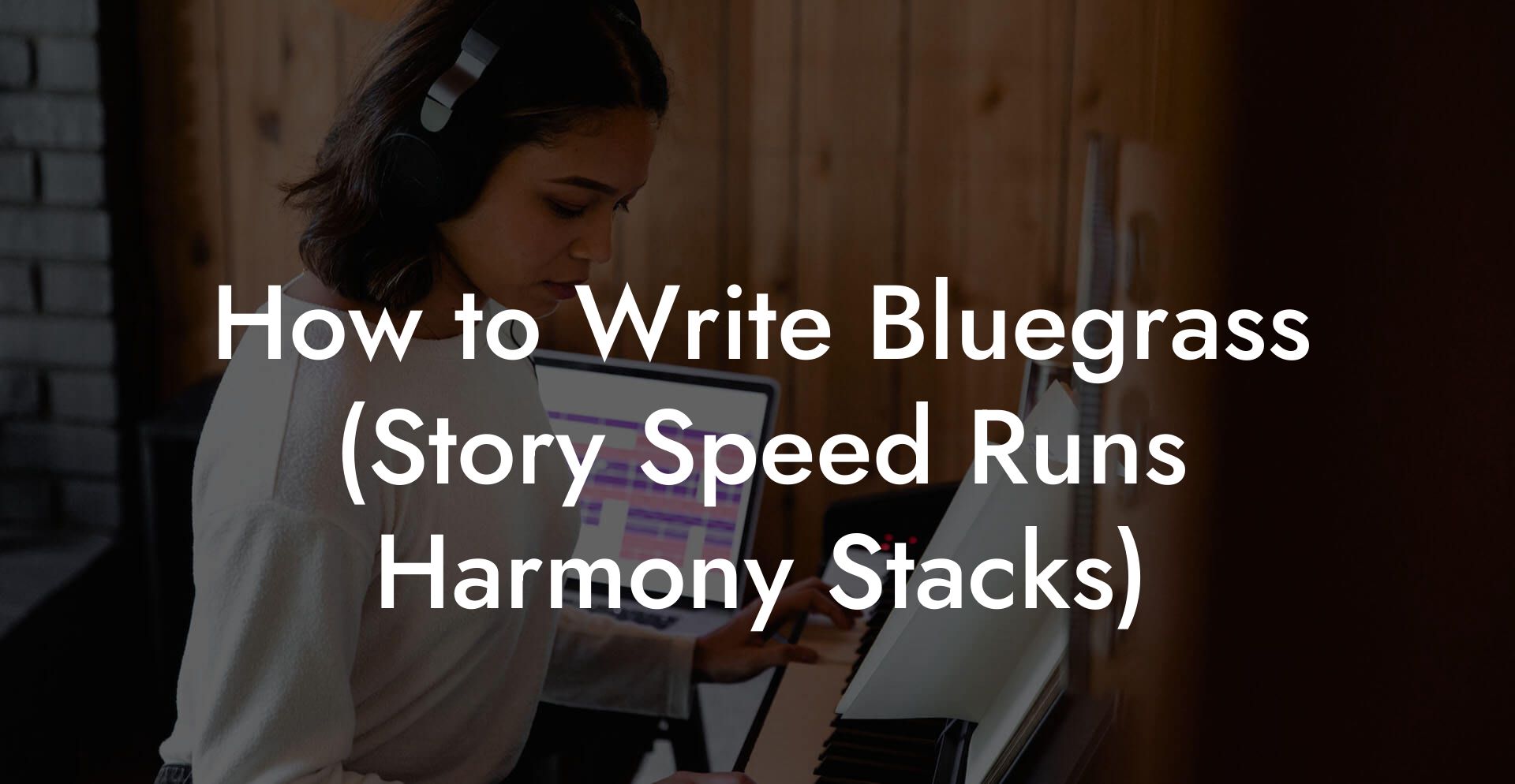
You want a bluegrass song that burns like a campfire story and smells like old cedar and fresh coffee. You want lyrics that race through a life moment and a chorus where three voices lock in and make strangers hug each other. Bluegrass is music of motion. It tells a whole life in three minutes. This guide gives you story speed runs, harmony stacking that actually works, practical chord maps, and arrangement moves you can steal for your own mountain jam or Nashville demo.
Quick Interruption: Ever wondered how huge artists end up fighting for their own songs? The answer is in the fine print. Learn the lines that protect you. Own your masters. Keep royalties. Keep playing shows without moving back in with Mom. Find out more →
Quick Links to Useful Sections
- What Is Bluegrass at Its Core
- Start with a Story Speed Run
- The one sentence core promise
- Speed run sequence
- Essential Bluegrass Song Structure
- Basic Chord Progressions for Bluegrass
- Classic I IV V loop
- Sample progressions
- Melody Craft for That Mountain Soul
- Melody checklist
- Writing Bluegrass Lyrics That Tell Quick Stories
- The Crime Scene Edit for Bluegrass
- Harmony Stacks That Glue People Together
- Vocal roles explained
- How to stack a three part harmony quickly
- Parallel thirds and moving harmonies
- Practical Harmony Exercises
- Drone and find thirds
- Stack in thirds drill
- Instrumental Arrangement and Breaks
- How to arrange breaks
- Rhythmic Patterns: Banjo Rolls and Mandolin Chop
- Prosody and Natural Speech in Bluegrass
- Rhyme, Meter, and Old Time Tricks
- Common Bluegrass Mistakes and Fixes
- Production Awareness for Acoustic Authenticity
- Co Writing in the Bluegrass World
- Finish Fast With a Checklist
- Bluegrass Song Examples You Can Model
- Micro Prompts to Write Faster
- Recording Demo on a Budget
- Common Questions Answered
- Do I need to be virtuosic to write a bluegrass song
- What is the high lonesome sound
- How do I choose keys for bluegrass
- What are banjo rolls
- How to make harmonies tight quickly
- Bluegrass Songwriting FAQ
Everything here is written for millennial and Gen Z artists who want results without music school slog. We explain technical terms so you do not feel like someone is speaking Latin at you. We include real life scenarios so you can imagine the line on stage, on the porch, or in the van at 3 a.m. Expect jokes, blunt edits, and tools that make songs finishable.
What Is Bluegrass at Its Core
Bluegrass is acoustic roots music that grew out of Appalachian string band traditions and early country. It centers on acoustic instruments like guitar, mandolin, banjo, fiddle, and upright bass. Bluegrass singing favors clear storytelling, close harmony singing, and instrumental breaks called solos or breaks. The texture can be spare and raw or fast and virtuosic depending on the players.
What makes bluegrass emotionally clickable
- Story first The lyric often tells a single strange and vivid story. The listener can picture a scene within the first line.
- Motion The music feels forward moving. Drive comes from rhythmic picking patterns and banjo rolls that do not let the mood rest.
- Close harmony Three part singing like lead tenor and baritone locks into a signature emotional sound.
- Hot breaks Short instrumental solos that both show off skill and advance the narrative energy.
- Roots vocabulary Concrete objects, time crumbs, and community details. No abstract therapy speak.
Start with a Story Speed Run
Bluegrass lyrics often compress an event into a compact arc. Think of a story speed run as the songwriting version of a TikTok that actually makes you cry. Tell the who where and what fast. Use specific objects. Put one small twist at the end. This is where the song earns its right to repeat.
The one sentence core promise
Before writing, write one sentence that says the whole song. Keep it micro. This sentence will be your chorus idea, title seed, and moral if the listener feels like there has to be one.
Examples
- He came back with mud on his boots and a secret on his breath.
- She left the porch light on for a year waiting for a truck that never came.
- We burned the letter in the firepit and laughed until the rain fell.
Turn that sentence into a short title that is easy to sing and say. Short title means the audience can text it to their friend while the band is still tuning. Titles like Porch Light or Mud Boots are better than multi clause headlines.
Speed run sequence
- Write your one sentence core promise. Keep it raw and plain.
- Draft three lines that set scene, reveal action, and then give the twist or consequence.
- Choose a repeating chorus line that says the promise in plain language.
- Trim anything that does not move the story forward.
Real life scenario: You are at a coffee shop watching a busker tune. You overhear a couple arguing about a truck. That becomes your whole song in seven minutes. That is the speed run method. Do not sleep on overheard material. It is gold.
Essential Bluegrass Song Structure
Bluegrass is flexible. Here is a reliable form that supports story speed runs and instrument breaks.
- Intro with a short riff
- Verse 1 story setup
- Chorus repeat of core promise
- Verse 2 escalation or complication
- Chorus
- Instrumental break of 2 or 3 solos rotating instruments
- Verse 3 resolution or payoff
- Final chorus with harmony stack and small ad lib
Instrumental breaks are not filler. They function like film cuts. Put new visual detail in the verse after the break to justify the solos.
Basic Chord Progressions for Bluegrass
Bluegrass lives in simple chord movement that supports melody and vocal harmony. The common tonal centers are G C D A E. Guitar players often use capo to change key for vocalist comfort. A capo is a clamp you place on the guitar neck to raise pitch. It lets you use familiar chord shapes in different keys. It is practical and fast when you need to sing higher without learning new fingerings.
Classic I IV V loop
This is the workhorse progression. Using Roman numerals is a way to refer to chords by their scale degrees. I means the tonic or home chord. IV is the subdominant. V is the dominant chord. In G major the I IV V are G C D. Play G for the verse. Move to C then back to G. Use D as a turnaround to get back to G.
Sample progressions
- G C G D G
- G Em C D G
- A D A E A
Bluegrass adds motion by using bass walks where the root moves stepwise under the chords. On guitar use simple bass notes then strum to suggest the upright bass. The mandolin chop on the offbeat keeps momentum. Offbeat means the weaker beats of the measure where the mandolin gives percussive rhythm.
Melody Craft for That Mountain Soul
Melodies in bluegrass should be singable and direct. They live in a small to medium range and favor step motion with occasional leaps to hook the ear. The chorus often lifts into a higher register for emotional release.
Melody checklist
- Sing it out loud raw before writing words
- Keep the chorus higher than the verse for lift
- Place the title on a strong note or longer syllable
- Use neighbor tones and passing notes to create momentum
Real life scenario: You are parking the van and you hum the line to yourself. If you have to press your throat to reach the chorus you are in the wrong key. Change capo or transpose. Comfort matters more than ego. If the band can sing it three times in a row with energy you are probably in the right range.
Writing Bluegrass Lyrics That Tell Quick Stories
Bluegrass lyrics do well with concrete details and small emotional beats. Avoid endless reflection. Show action. Use time stamps. Use objects with attitude. Put a small twist in verse three that reframes the story. Think show not tell. Use short lines that match the motion of the music.
The Crime Scene Edit for Bluegrass
- Underline every abstract word like love lonely regret and change them to objects or actions.
- Add a time crumb such as a month, a night, a morning, or midnight.
- Give a sensory detail in every verse. Smell, sound, or a physical object.
- End each verse with a line that prepares the chorus emotionally.
Before and after lines
Before: I missed you the whole time.
After: The mailbox kept your name for a week and then spit it back at me.
Before: He broke my heart.
After: He left the whiskey glass on the porch with lipstick like a last word.
Harmony Stacks That Glue People Together
Harmony stacking is the secret sauce of bluegrass singing. Most bands use three part harmony with roles called lead tenor and baritone. Know these roles and how they move.
Vocal roles explained
- Lead The melody singer. The person who carries the text and the title.
- Tenor Sings above the lead. Tenor is usually a third above the lead or a sixth below depending on arrangement. Tenor gives brightness and lift.
- Baritone Fills the missing note of the triad. Baritone can sing below the lead or above tenor depending on voice ranges. Baritone locks the chord together and creates that warm chewing sound.
We will avoid complex music theory language. A triad is simply three notes that make a basic chord. If the lead sings the middle note of the triad the tenor and baritone sing the other two notes and the result is harmony. Harmony in bluegrass likes simple intervals like thirds and sixths because they sound natural and human.
How to stack a three part harmony quickly
- Sing the lead melody plainly and record it on your phone. This is your master track.
- Have someone sing above it on obvious phrase endings. If that person naturally wants to go higher they will find a third above the melody. Lock that as the tenor.
- Now find the missing note. If the lead is on the middle note of a G chord the tenor might be a B and the missing note is a D. That missing note is the baritone.
- Work on vowel matching. Everyone must sing the same vowel on long notes. This makes harmony blend like glue.
Vowel match example. If the lead sings the word down with an ah vowel you all sing ah on that vowel. If someone says they cannot reach high sing the tenor an octave lower or move the capo to bring the melody into comfortable range.
Parallel thirds and moving harmonies
Parallel thirds means the tenor moves with the lead, keeping two notes a third apart. This is classic. It is easy and effective. But be wary of constant parallel motion across the whole melody. Good harmony sometimes moves into contrary motion where one voice rises while another falls. That gives interest and prevents a robotic feeling.
Practical Harmony Exercises
Practice these drills with your band. They sound cheesy but they work.
Drone and find thirds
- One person holds a drone note on a single vowel. This could be a sustained guitar or a sung note.
- Another voice sings the melody. A third voice explores notes above and below until three notes of the chord are present.
Stack in thirds drill
- Take a single phrase of the chorus. Sing it solo as lead.
- Add a tenor a third above on the last phrase. Loop.
- Add baritone on the first phrase. Practice the entire chorus in three part harmony.
Instrumental Arrangement and Breaks
Bluegrass is as much about instrumental conversation as it is about singing. Breaks are vital. They give players their moment and give the listener a musical memory to carry when words are absent.
How to arrange breaks
- Decide which instruments will solo. Common order is fiddle banjo mandolin guitar but change it to serve the song.
- Keep breaks short. One chorus length is often enough. Too long and the story loses momentum.
- Play the melody or a slight variation during the first break to tie the solo back to the song.
- Use call and response between instruments. Let the banjo call and the fiddle answer.
Real life scenario. You are playing a festival and the fiddle player knows three runs that make everyone lean in. Give the fiddle one chorus. Let the mandolin chop return for the next verse. The crowd remembers the fiddle lick and hums it back to you in the food line. That is power.
Rhythmic Patterns: Banjo Rolls and Mandolin Chop
Banjo rolls are picking patterns that create rhythmic drive. You do not need to be a banjo wizard to write a song that supports banjo. Learn the basic roll shapes conceptually. Rolls are repeated picking patterns that outline the chord while giving forward motion.
Mandolin chop is a percussive offbeat chop that keeps the groove alive. It is like a snare drum in the acoustic world. When writing, leave space for that chop. Count your vocal phrases so the mandolin has room to breathe.
Prosody and Natural Speech in Bluegrass
Prosody means matching lyric stress to musical stress. Speak your lines as if you are telling a friend a story. Bluegrass voice is conversational with edges. If a strong word falls on a weak beat the line will feel wrong even if the rhyme works. Fix the melody or rewrite the line to match natural stress.
Try this test. Record the line spoken at normal speed. Tap the beat on the table. Move the spoken stresses onto the beat. If it feels forced change the lyric.
Rhyme, Meter, and Old Time Tricks
Bluegrass uses rhyme to create momentum. Rhyme can be full end rhyme, internal rhyme, or family rhyme. Family rhyme uses similar vowel sound or consonant families without a perfect match. It feels modern and conversational.
Use short lines. Many classic bluegrass songs use balanced couplets. Think of lines as camera shots. If the second line repeats the first line meaning do not keep it. Add new detail. The chorus can repeat the title with a small twist each time to keep forward motion.
Common Bluegrass Mistakes and Fixes
- Too many details. Fix by choosing one clear emotional arc. Let one object or image carry the verse.
- Melody that does not lift. Fix by moving chorus into higher register or adding tenor harmony above the lead.
- Harmony that sounds mushy. Fix by matching vowels and cleaning diction. Often less volume and more vowel control helps.
- Solo section that stalls the story. Fix by making the break serve the narrative. After the break add a verse that reveals one more fact.
- Trying to be too traditional. Fix by bringing your lived detail into the lyric. Modern objects paired with traditional delivery create fresh bluegrass.
Production Awareness for Acoustic Authenticity
Even if you plan to record live you will make choices that affect song writing. Microphone placement matters. Close mics capture string noise and breath. Room mics capture the ensemble glue. Leave room in your arrangement so instruments do not fight the vocal. Bluegrass benefits from clarity. If the guitar is muddy cut some low mids. If the banjo is too bright roll off top end. These are production moves but they should influence writing. If the chorus is meant to be intimate keep fewer instruments playing under the vocal so the harmonies can be heard.
Co Writing in the Bluegrass World
Co writing sessions can be a gift if you treat them like collaboration not compromise. Bring a strong title or one solid verse. Let the other writers throw offers. If you bring a core promise everyone can riff around it. Use time bounded drills where you write a chorus in ten minutes. That creates honesty and momentum.
Real life scenario. You are in a cabin with two other writers. One brings a photo of a porch. You bring a title Porch Light. The other brings a fiddle riff. You have a song in twenty minutes. That is how bluegrass songs get born.
Finish Fast With a Checklist
- Core promise written as one sentence and as the chorus title.
- Verse one sets scene with object time and action.
- Chorus repeats the promise in plain language and lifts melodically.
- Verse two adds complication or escalation.
- Arrange instrumental break order before verse three.
- Verse three resolves with twist or pay off.
- Harmony stack arranged for chorus with simple thirds and matching vowels.
- Short demo recorded on phone and played to three listeners. Ask which line they remember.
Bluegrass Song Examples You Can Model
Theme: Reckless love and a truck that would not start.
Verse 1: The October porch light hummed like an old radio. He swore at his keys and the truck answered with a cough and a sigh.
Chorus: Porch light left on for you. I set my heart on a shelf and let it rust for you.
Verse 2: Your jacket still smells like gasoline and rain. I fold it in a drawer like proof you came and proof you stayed.
Break: Fiddle one chorus. Banjo one chorus. Mandolin tag.
Verse 3: The truck finally started on a Tuesday with a dawn that looked like forgiveness. You drove past and did not look back.
Chorus final: Porch light left on for you. I took it down and walked it home with me this time.
Micro Prompts to Write Faster
- Object in the room. Pick one object near you and write four lines where that object witnesses the story. Ten minutes.
- Time stamp drill. Write a chorus that includes a date or a time and a specific weather detail. Five minutes.
- Dialogue drill. Write two lines as if answering a text from the person you mention in the song. Keep it honest. Five minutes.
Recording Demo on a Budget
Two minute guide to a demo that sells songs
- Record a clean guitar or banjo track with a simple mic. You can use your phone as a room mic and a small condenser for close work.
- Record lead vocal dry. Sing like you mean it. No vocal effect. Authenticity matters.
- Add harmony track for chorus only. Keep it three part if you can. This demonstrates arrangement potential.
- Record one instrumental break to show how solos sit.
- Export as mp3 and name file with title and writer names. Keep it under five megabytes for easy upload.
Common Questions Answered
Do I need to be virtuosic to write a bluegrass song
No. Bluegrass values heart and truth as much as dexterity. Great songs have been written by people who are not shredders. If you can get a melody that sings and a chorus that sticks you already have 80 percent of the job done. Instrumental fireworks are icing. The cake is the song.
What is the high lonesome sound
High lonesome refers to a vocal quality often associated with early bluegrass. It has a raw open vowel and an emotional edge. Think of it as voice with a slightly wild top. It is not a technique to fake. It comes from honest phrasing and willingness to let some edges show.
How do I choose keys for bluegrass
Choose keys that fit your lead singer and the tenor harmony. Common practical choice is G because it sits well for many voices and is banjo friendly. Use a capo to adjust to the lead vocal without changing chord shapes. If the tenor can sing high bring the key up. If not keep it lower.
What are banjo rolls
Banjo rolls are repeating finger picking patterns that outline the chord while creating momentum. The Scruggs style is the classic three finger roll pattern associated with modern bluegrass. As a writer you do not need to know every roll. You just need to leave rhythmic space for a roll and write vocal phrases that flow through the pattern.
How to make harmonies tight quickly
Match vowels. Practice with a drone or a simple guitar chord and sing the same vowel on long notes. Record and play back. If the blend is rough move one voice up or down an octave or adjust the vowel placement. Use breath control to shape consonant attacks so the words land together.
Bluegrass Songwriting FAQ



